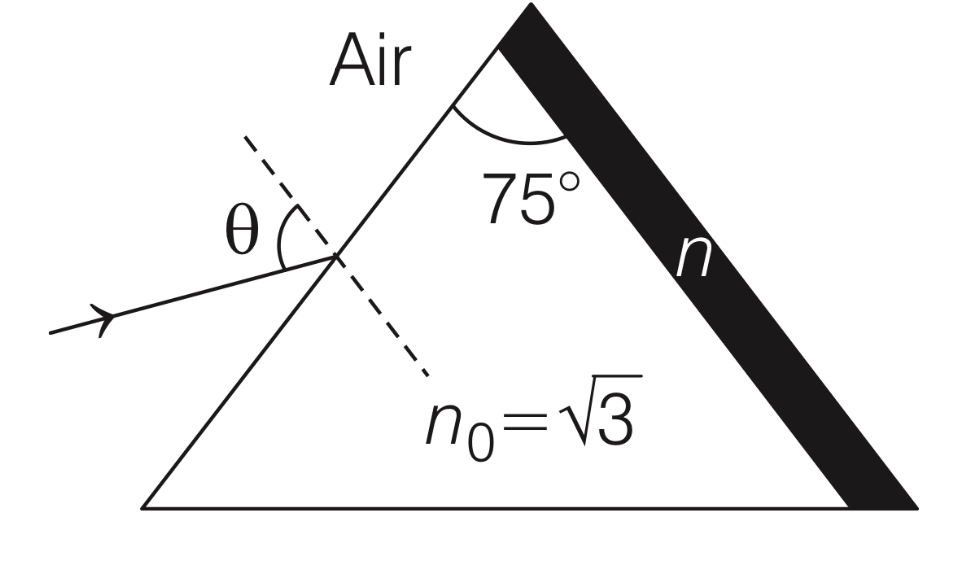
An object and a concave mirror of focal length $f=10 \mathrm{~cm}$ both move along the principal axis of the mirror with constant speeds. The object moves with speed $V_{0}=15 \mathrm{~cm} \mathrm{~s}^{-1}$ towards the mirror with respect to a laboratory frame. The distance between the object and the mirror at a given moment is denoted by $u$. When $u=30 \mathrm{~cm}$, the speed of the mirror $V_{m}$ is such that the image is instantaneously at rest with respect to the laboratory frame, and the object forms a real image. The magnitude of $V_{m}$ is _________ $\mathrm{cm} \,\mathrm{s}^{-1}$.


A rod of length $2 \mathrm{~cm}$ makes an angle $\frac{2 \pi}{3} \mathrm{rad}$ with the principal axis of a thin convex lens. The lens has a focal length of $10 \mathrm{~cm}$ and is placed at a distance of $\frac{40}{3} \mathrm{~cm}$ from the object as shown in the figure. The height of the image is $\frac{30 \sqrt{3}}{13} \mathrm{~cm}$ and the angle made by it with respect to the principal axis is $\alpha$ rad. The value of $\alpha$ is $\frac{\pi}{n} r a d$, where $n$ is __________ .




